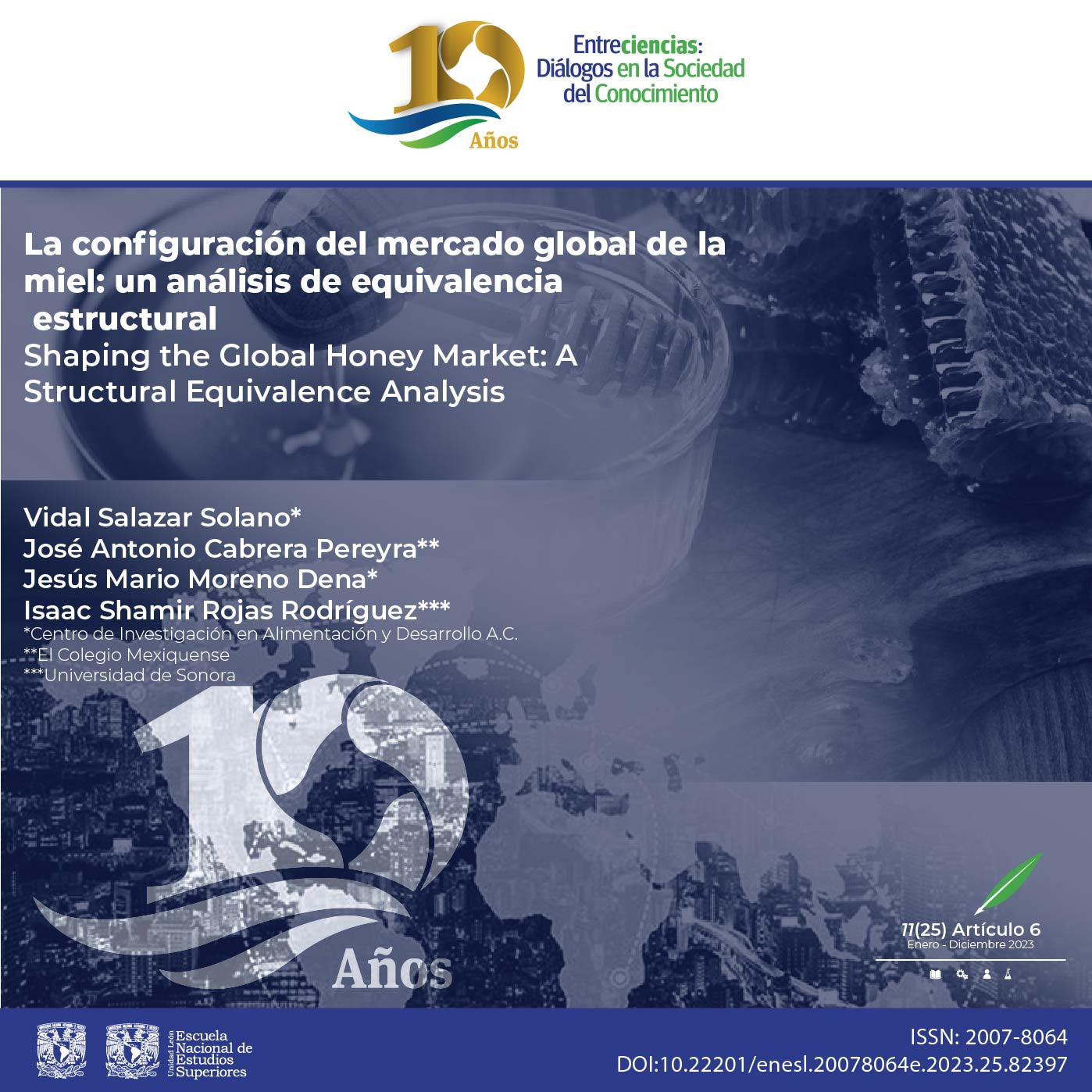Shaping the Global Honey Market: A Structural Equivalence Analysis
Main Article Content
Abstract
Purpose: Define the participating countries role in the world honey trade structure, based on access capacities to the global market as suppliers, consumers and/or re-exporters.
Methodological design: The analysis is supported by a cross-sectional quantitative research design and descriptive scope. A block modeling exercise was carried out to identify groups with similar behavior, in a context of exchange relations (center-periphery), between dominant actors in the chain and others that gravitate around the central nucleus. Binary data were used: 1 represents connection or access to the market and 0 the absence of exchange.
Results: Block modeling is confirmed as an analytical tool of the role of each competing country in a context of center-periphery relations, in which central positions emerge (market power, governance), with respect to the rest of the chain's agents. As a result of the modeling, it was possible to group the countries into three blocks: central axis; main exporters; secondary markets.
Findings: The research provides a synthesis of global honey trade strategies: exports from the main exporters to secondary markets; exports from main exporters to the central hub; exports from the central hub to secondary markets; exports to and from the central hub.
Research Limitations: Binarization of data represents loss of information however, it does not prevent us from analyzing the configuration of the global honey market.
Downloads
Article Details

This work is licensed under a Creative Commons Attribution-NonCommercial-NoDerivatives 4.0 International License.

Entreciencias: Diálogos en la Sociedad del Conocimiento recognizes and respects the moral rights of authors as well as ownership rights transferred in non-exclusivity to the journal for its open access dissemination and its preservation. Hence, authors who publish in this journal accept the following conditions:
- Entreciencias: Diálogos en la Sociedad del Conocimiento from Universidad Nacional Autónoma de México is distributed under a Licencia Creative Commons Atribución-NoComercial-SinDerivar 4.0 Internacional, which allows the information and metadata to be used without commercial ends as long as proper citation is utilized.
Authors will have the right to non-exclusively distribute the contribution made to Entreciencias: Diálogos en la Sociedad del Conocimiento. That is, they will be able to include it in an institutional repository or disseminate it in other digital or printed media as long as it is explicitly stated that it was first published in Entreciencias: Diálogos en la Sociedad del Conocimiento. The following information must additionally be included: author, year, volume, page numbers, electronic paging, and DOI.
Authors, whose publications have been accepted, will have to send the Letter of Copyright Transfer in the corresponding format, filled out and signed by the author or authors.
